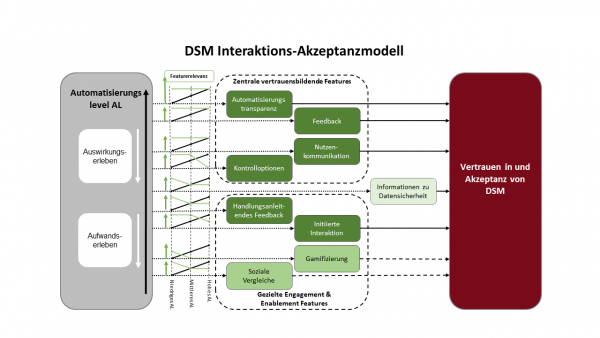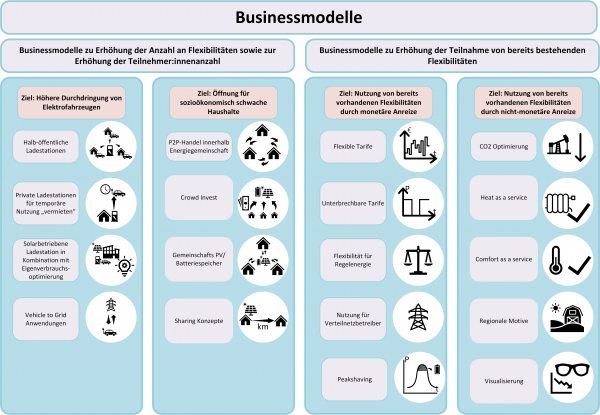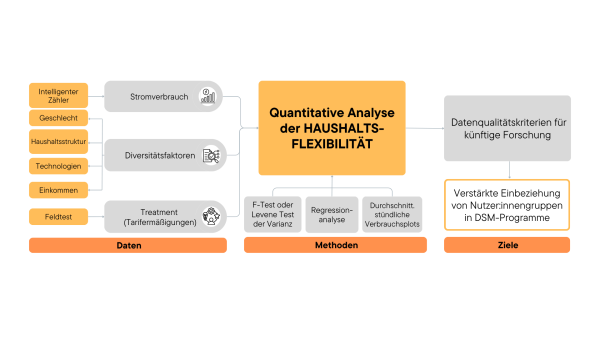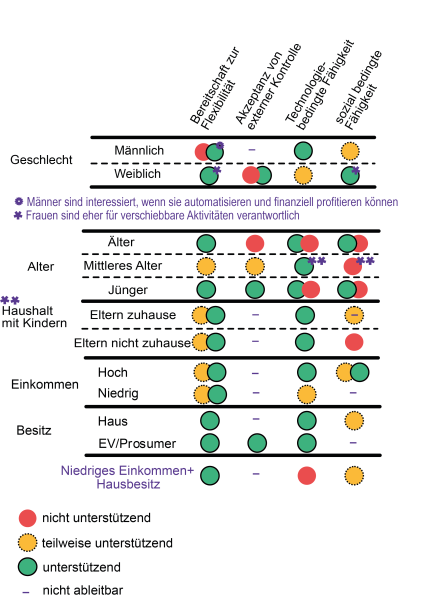Project Image Pool
There are 4 results.
Terms of use: The pictures on this site originate from the projects in the frame of the programmes City of Tomorrow, Building of Tomorrow and the IEA Research Cooperation. They may be used credited for non-commercial purposes under the Creative Commons License Attribution-NonCommercial (CC BY-NC).
DSM Interaction and acceptance model
This figure shows the DSM interaction and acceptance model developed within the project framework, the central trust-building interaction features as well as their changing relevance for the building of trust and acceptance depending on the automation level.
Copyright: AIT Austrian Institute of Technology GmbH
Business models
This figure gives an overview of the business models that were considered in the context of the project on various issues related to Demand Side Management (DSM). A more detailed description of the individual models can be found in the final report.
Copyright: AIT Austrian Institute of Technology GmbH
Analysis of Gender and Diversity Factors in Relation to Energy Consumption Flexibility
The graphic provides an overview of the approach to the quantitative analysis of household flexibility and the conclusions derived from it. Electricity consumption, recorded via smart meters, was combined with diversity dimensions and associated aspects such as gender, household structure, income, and available technologies. Treatments implemented during field tests, such as tariff reductions for peak load reductions, were documented in the dataset. Quantitative methods, including F-tests or Levene's test for variance, regression analysis, and plots of average consumption, were used to gain insights into consumption patterns and identify diversity-specific differences. Building on these findings, data quality criteria for future research were formulated, and a stronger inclusion of diverse user groups in demand-side management (DSM) programs was recommended.
Copyright: SLA2.0
Diversity-specific flexibility framework for demand-side management
The framework illustrates the connections between the diversity dimensions of gender, age, and income, as well as the subcategories of parenthood and ownership, with willingness to be flexible, acceptance of external control, and flexibility driven by technology or social factors. Women exhibit an increased socially-driven flexibility, as they are more often responsible for the relevant activities, while men tend to have greater technologically-driven flexibility and are more interested in automation and financial benefits. Younger and older individuals are generally more willing to be flexible, with younger people being more open to accepting external control, whereas older individuals are more likely to reject it. Technologically and socially-driven flexibility is significantly influenced by parenthood, which tends to limit social flexibility but can enhance technological flexibility and foster willingness. Both higher and lower incomes can promote willingness, with financial motives being a central driver for those with lower incomes. Higher incomes also positively impact the ability to be flexible (both technologically and socially). Ownership of electric vehicles (EVs) or single-family homes plays a key role, enhancing willingness, acceptance of external control (in the case of homeowners with prosumer technologies), and technologically-driven flexibility.




